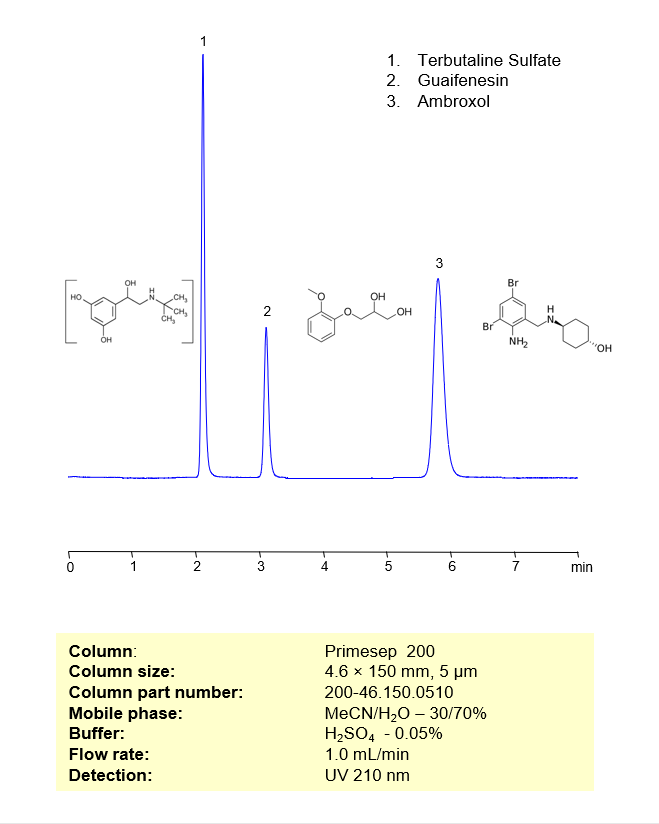High Performance Liquid Chromatography (HPLC) Method for Separation of Terbutaline Sulfate, Guaifenesin and Ambroxol on Primesep 200 by SIELC Technologies
Separation type: Liquid Chromatography Mixed-mode

Terbutaline Sulfate is a β2 analyst typically used as a prescription-strength cough suppressant. Guaifenesin, also known as Glyceryl Guaiacolate, is a popular expectorant used to treat chest congestion. Ambroxol is a well-known expectorant that targets and breaks down phlegm. Together, these three medicinal compounds are typically found as the active ingredients in many cough syrups. They can be retained, analyzed, and separated on a Primesep 200 mixed-mode column using an isocratic analytical method with a simple mobile phase of water, Acetonitrile (MeCN), and a Phosphoric acid (H3PO4) ionic modifier. This analysis method can be detected in the low UV regime at 210 nm.
High Performance Liquid Chromatography (HPLC) Method for Separation of Terbutaline Sulfate, Guaifenesin and Ambroxol
.
Condition
| Column | Primesep 200, 4.6×150 mm, 5 µm, 100A |
| Mobile Phase | MeCN/H2O – 30/70% |
| Buffer | H3PO4 – 0.05% |
| Flow Rate | 1.0 ml/min |
| Detection | UV 210 nm |
| Peak Retention Time | 2.09, 3.28, 5.81 min |
Description
| Class of Compounds | Drugs |
| Analyzing Compounds | Terbutaline Sulfate, Guaifenesin and Ambroxol |
Application Column
Primesep 200
Column Diameter: 4.6 mm
Column Length: 150 mm
Particle Size: 5 µm
Pore Size: 100 A
Column options: dual ended
Guaifenesin
Terbutaline





